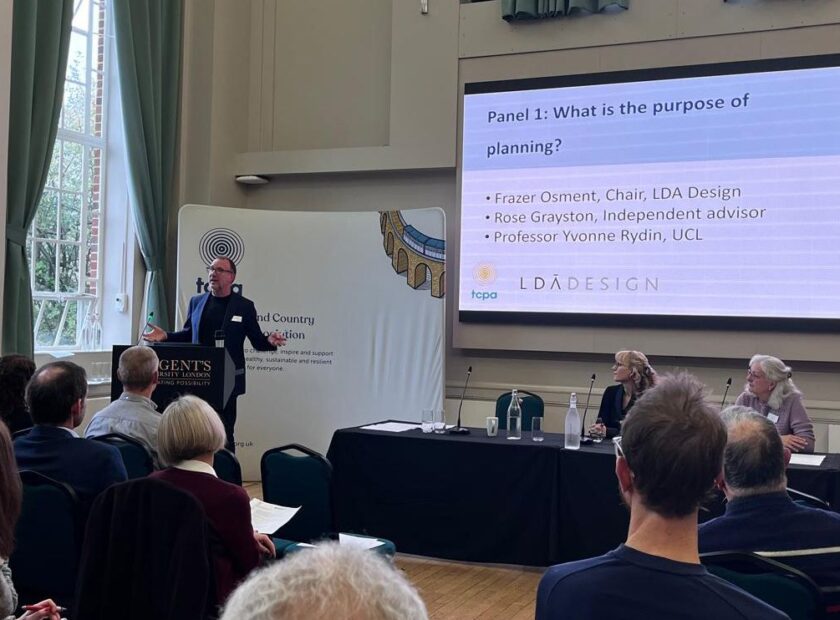Our fragile high streets: Death by permitted development rights? The TCPA publishes research exposing risk to high street posed by change of planning laws.
New research from the Town and Country Planning Association (TCPA) and University College London (UCL) reveals that 80% of shops and other commercial premises on highstreets across England could be lost because of further changes to planning rules.
Lively, useful and safe town centres and high streets are crucially important to the wellbeing of communities. They are the hearts of our towns and cities – they are where we go to socialise, buy groceries, or access important support services such as childcare. In recent years, though, high streets across England have been ravaged by the rise of online retailing and the impacts of the COVID-19 epidemic. In response, the government has made bold claims about ‘reinvigorating’ them, ‘levelling up’ ‘left-behind’ places, and ‘building beautiful’. But at the same time as making these claims it has actually stripped away councils’ ability to shape their local places, or ensure that new homes are fit to live in.
With little fanfare, the government has this week (1 August) changed planning rules in England so that the vast majority of shops and other commercial buildings, including restaurants, cafes, offices, gyms, nurseries, day centres and light industrial units, can be made into homes without planning permission.
This is the first research to map the effect of these changes, and assess the potentially devastating impact they could have on highstreets and town centres across England. Examining four case study areas representing different types of built environment – Barnet, Crawley, Huntingdonshire, and Leicester – it found that 80.3% of shops and other commercial buildings could be lost to residential conversion. This figure was as high as 89% for Barnet. In Leicester and Crawley it stands at 77%, and in Huntingdonshire, 75%. Clearly, anywhere near this reduction in commercial premises – whether shops, cafés, restaurants, gyms, nurseries, or day centres – would rip the hearts out of our communities.
More widely, these changes will mean that Councils have very little say over what happens to their highstreets and whether new housing meets people’s needs. Communities will have no say at all. Planners will only be allowed to assess new developments against a short list of requirements drawn up by central government.
These changes signal the latest in a series of expansions of PDRs by the Government since 2013. This is despite PDRs being widely criticised for producing large numbers of shockingly low-quality homes which are undermining people’s health and wellbeing.
The latest changes have been undertaken by government as part of their attempts to revitalise high streets, which have been hit hard by the rise of online retailing and the impacts of the COVID-19 pandemic. And to deliver more homes. But by continuing to deregulate they are further stripping away councils’ ability to shape their local places, and ensure that new homes are of a high quality and meet people’s needs.
Fiona Howie, The TCPA’s chief executive, said:
“We recognise the need for more homes and the desire to regenerate high streets. But we need new homes to be high quality and for town centres to be able to provide a mixture of services and amenity space. This latest expansion of PDRs further reduces the ability of local authorities and communities to shape their local areas. This is not the right approach if government really wants to ‘build back better’ and to revitalise our high streets.
This latest expansion of PDRs also contradicts the government’s recent emphasis on high quality design and beauty. Design codes could be a powerful tool but, as this research has shown, in urban areas around 80% of shops and premises could be converted to homes and local plan policies and design codes would not apply.”
Lord Crisp, independent crossbench member of the House of Lords, co-chair of the All-Party Parliamentary Group on Global Health and former chief executive of the NHS in England, said:
“We know the profound impacts that people’s homes and communities can have on their health, wellbeing and life chances. We must see the changing high streets as an opportunity to develop housing that promotes physical and mental health and wellbeing – a real opportunity to build back better after the pandemic. It requires vision, creativity and a real commitment to quality. The TCPA have developed a range of principles, which together define what constitutes healthy homes and neighbourhoods. The principles consider issues such as fire risk, heat and noise insulation, and highlight wider issues such as the importance of access to green spaces and amenities. These need to be enshrined in law to make sure that all new homes support people’s mental and physical health. and wellbeing”
ENDS
Notes:
- The Town and Country Planning Association (TCPA) works to challenge, inspire and support people to create healthy, sustainable and resilient places where everyone can thrive.
- The TCPA are campaigning for a Healthy Homes Act to ensure that all new homes and neighbourhoods to a decent quality, and effectively outlaw those which undermine residents’ health and wellbeing.
- Download the research here.
- Download an executive summary here
- Maps from the report are available in high definition upon request.
- For further information or comment, please contact [email protected] or call +44 20 8132 5455



